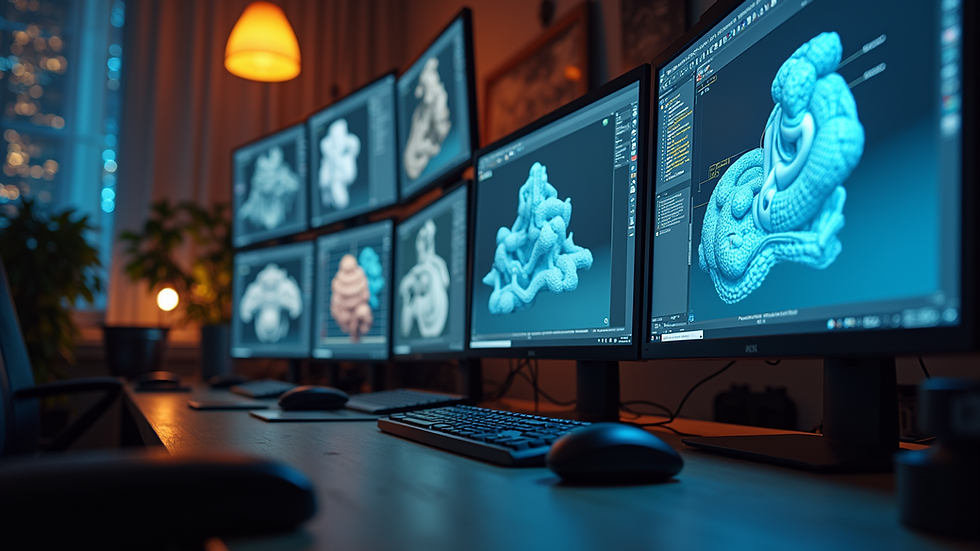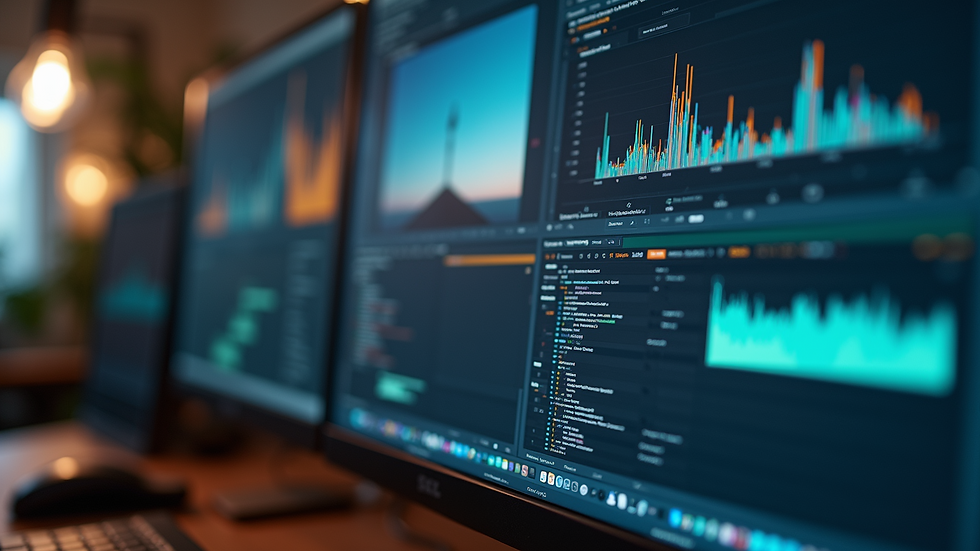Exploring the Role of a Visual Effects Artist
- Jeff Bedrick
- Oct 6
- 4 min read
In the world of film, television, and digital media, the magic that captivates audiences often comes from behind the scenes. One of the key contributors to this magic is the visual effects artist. These professionals blend creativity with technology to bring imaginative worlds and scenes to life. This article explores the multifaceted role of a visual effects artist, shedding light on their responsibilities, skills, and the impact they have on storytelling.
Understanding the Role of a Visual Effects Artist
A visual effects artist is responsible for creating and integrating digital effects into live-action footage or entirely computer-generated scenes. Their work ranges from subtle enhancements, like adding weather effects or removing unwanted objects, to creating spectacular scenes involving explosions, fantastical creatures, or futuristic environments.
Visual effects artists collaborate closely with directors, producers, and other creative team members to ensure that the effects align with the story’s vision. They use specialized software such as Adobe After Effects, Autodesk Maya, and Nuke to craft these visuals. The process often involves:
Conceptualizing effects based on the script and storyboard.
Modeling and animating digital elements.
Compositing multiple layers of images and effects.
Refining and rendering the final output for seamless integration.
This role requires a balance of artistic talent and technical expertise, as artists must understand both the creative and scientific aspects of visual effects.

Key Responsibilities and Daily Tasks
The daily tasks of a visual effects artist can vary depending on the project and production stage. However, some common responsibilities include:
Pre-Production Planning
Visual effects artists often participate in pre-production meetings to discuss the scope of effects needed. They help plan shots that require special effects and advise on technical feasibility.
Creating Digital Assets
Artists build 3D models, textures, and animations that will be used in scenes. This might include anything from a realistic dragon to a futuristic cityscape.
Simulation and Animation
They simulate natural phenomena like fire, water, smoke, and explosions using physics-based software tools to add realism.
Compositing and Integration
Combining live-action footage with digital elements is a critical step. Artists ensure that lighting, shadows, and colors match perfectly to create believable scenes.
Revisions and Feedback
Visual effects work is iterative. Artists revise their work based on feedback from directors and supervisors to meet creative expectations.
Final Rendering
Once approved, the effects are rendered in high resolution for inclusion in the final cut of the film or video.
This role demands strong problem-solving skills and the ability to work under tight deadlines while maintaining high-quality output.

What Qualifications Do You Need to Be a Visual Effects Artist?
Becoming a visual effects artist typically requires a combination of formal education, technical skills, and practical experience. Here are some key qualifications and recommendations:
Educational Background
A bachelor’s degree in computer graphics, animation, fine arts, or a related field is often preferred. Some artists also come from backgrounds in film production or computer science.
Technical Skills
Proficiency in industry-standard software such as Maya, Houdini, After Effects, and Nuke is essential. Knowledge of programming languages like Python or C++ can be an advantage for creating custom tools.
Artistic Ability
A strong foundation in drawing, color theory, and composition helps artists create visually compelling effects.
Portfolio Development
Building a portfolio showcasing a range of effects work is crucial. This can include personal projects, internships, or freelance work.
Internships and Networking
Gaining experience through internships or entry-level positions helps build industry connections and practical skills.
Continuous Learning
The visual effects industry evolves rapidly. Staying updated with new software, techniques, and trends is vital for career growth.
Aspiring artists should focus on developing both their creative and technical abilities to succeed in this competitive field.

The Impact of Visual Effects on Storytelling
Visual effects are not just about flashy visuals; they play a crucial role in storytelling. They help filmmakers:
Create Immersive Worlds
Effects allow the creation of environments that would be impossible or too expensive to build physically, such as alien planets or historical settings.
Enhance Emotional Impact
Subtle effects like enhancing lighting or adding atmospheric elements can heighten the mood and tone of a scene.
Visualize the Impossible
From superheroes flying to mythical creatures, visual effects bring fantastical elements to life, expanding the boundaries of imagination.
Improve Safety and Practicality
Dangerous stunts or hazardous scenes can be simulated digitally, ensuring the safety of actors and crew.
Maintain Continuity and Realism
Effects can correct errors or inconsistencies in footage, ensuring a seamless viewing experience.
By blending creativity with technology, visual effects artists contribute significantly to the narrative and emotional depth of films and media.
How to Start a Career in Visual Effects
For those interested in pursuing this exciting career, here are some actionable steps:
Learn the Basics
Start with online tutorials and courses on visual effects software and techniques.
Build a Strong Portfolio
Create diverse projects that showcase your skills in modeling, animation, and compositing.
Gain Experience
Look for internships, freelance gigs, or entry-level positions in studios.
Network
Attend industry events, join online forums, and connect with professionals.
Stay Updated
Follow industry news, learn new tools, and experiment with emerging technologies like virtual reality and real-time rendering.
Consider Specialization
Some artists focus on specific areas such as character animation, environment creation, or simulation effects.
By following these steps, aspiring artists can build a rewarding career in visual effects.
The Future of Visual Effects and Emerging Trends
The field of visual effects is constantly evolving with advancements in technology. Some emerging trends include:
Real-Time Rendering
Technologies like Unreal Engine allow artists to see effects in real-time, speeding up the creative process.
Artificial Intelligence
AI is being used to automate repetitive tasks, enhance image quality, and create more realistic simulations.
Virtual Production
Combining live-action filming with digital environments in real-time is transforming how movies are made.
Increased Accessibility
More affordable software and online resources are making visual effects accessible to independent creators.
Cross-Disciplinary Collaboration
Visual effects artists are working closely with game developers, VR creators, and other digital media professionals.
These trends promise exciting opportunities and challenges for future visual effects artists.
For those passionate about combining art and technology, becoming a visual effects artist offers a dynamic and creative career path. Whether enhancing a blockbuster film or crafting a digital masterpiece, their work continues to push the boundaries of what is visually possible.




Comments